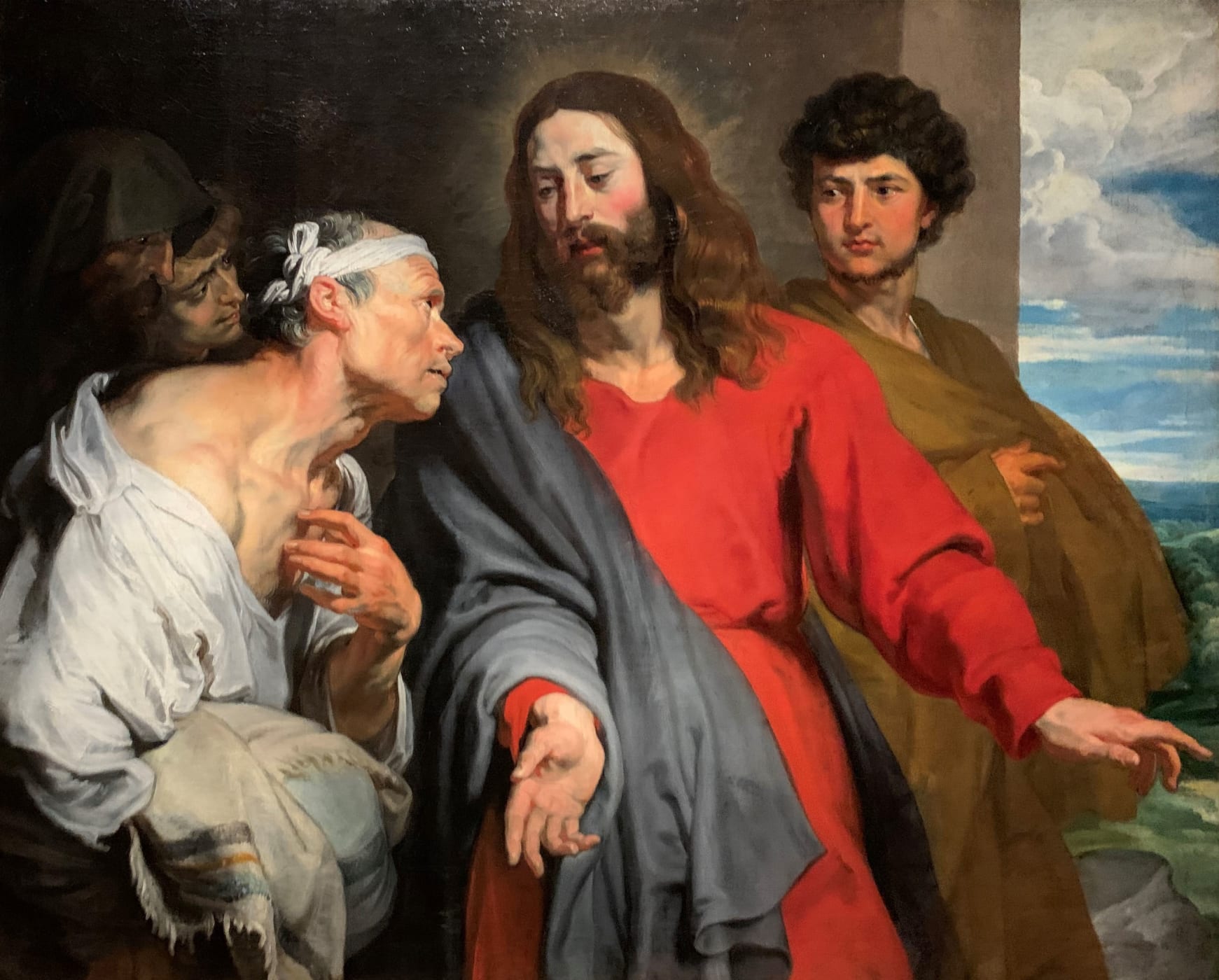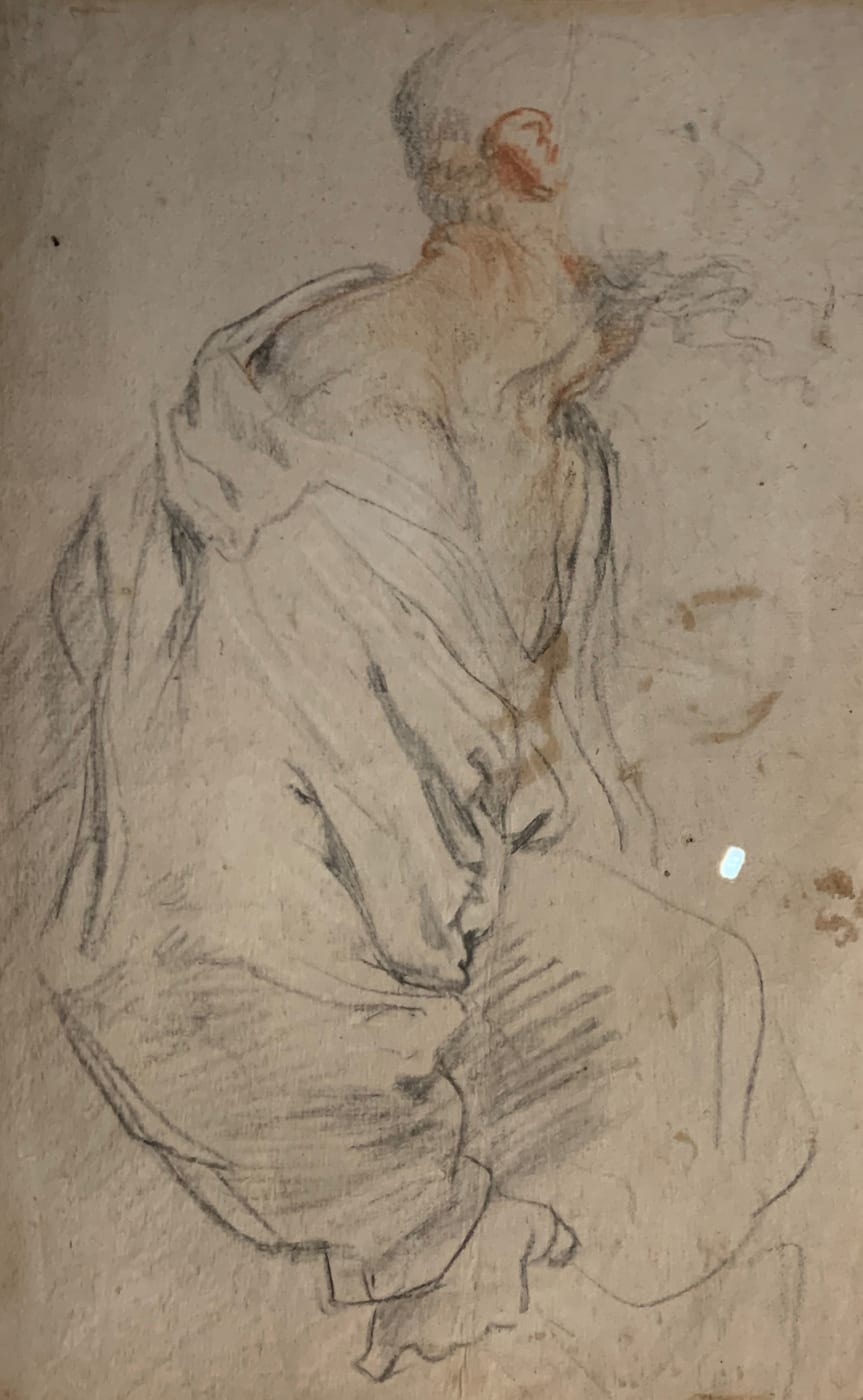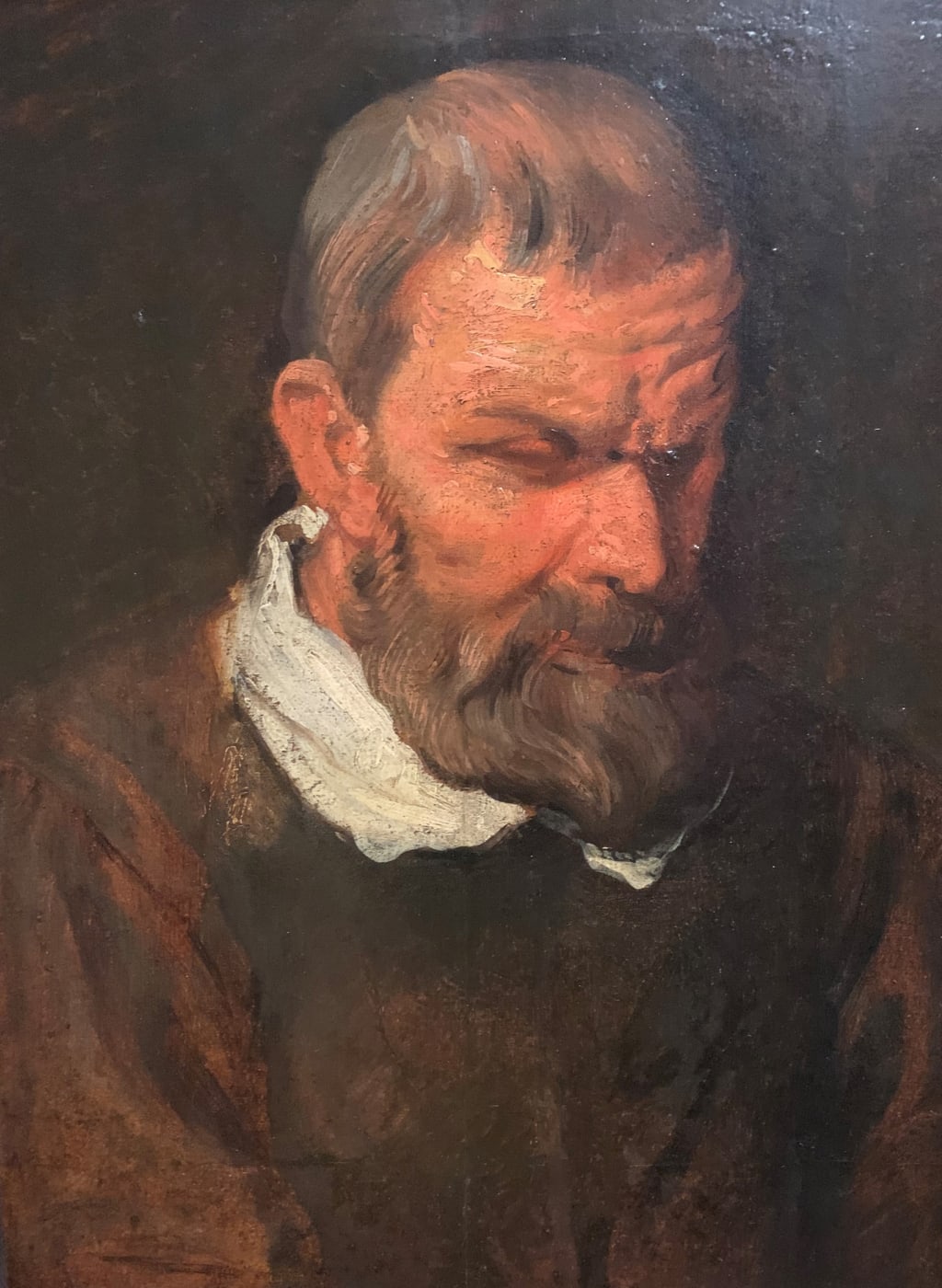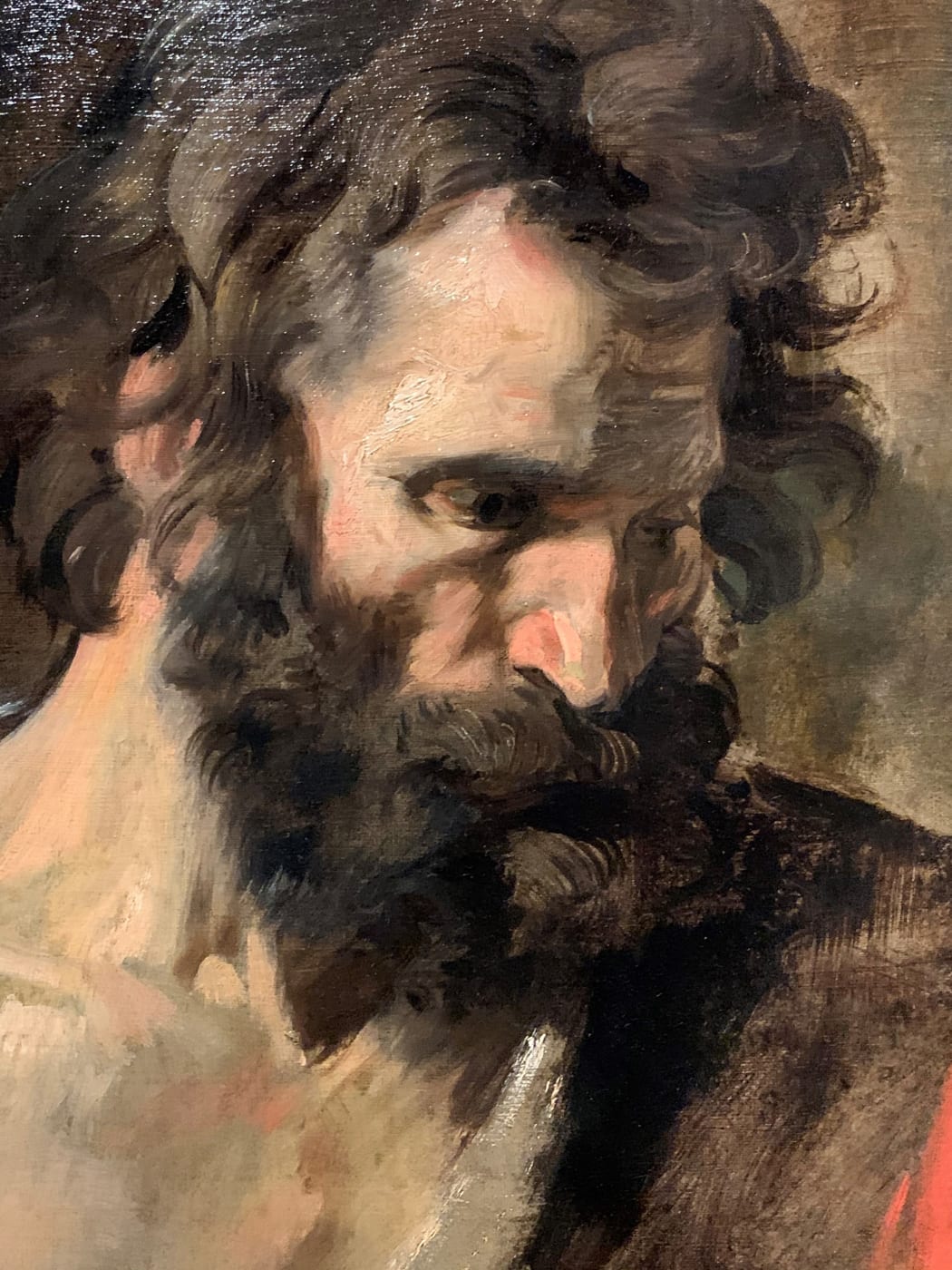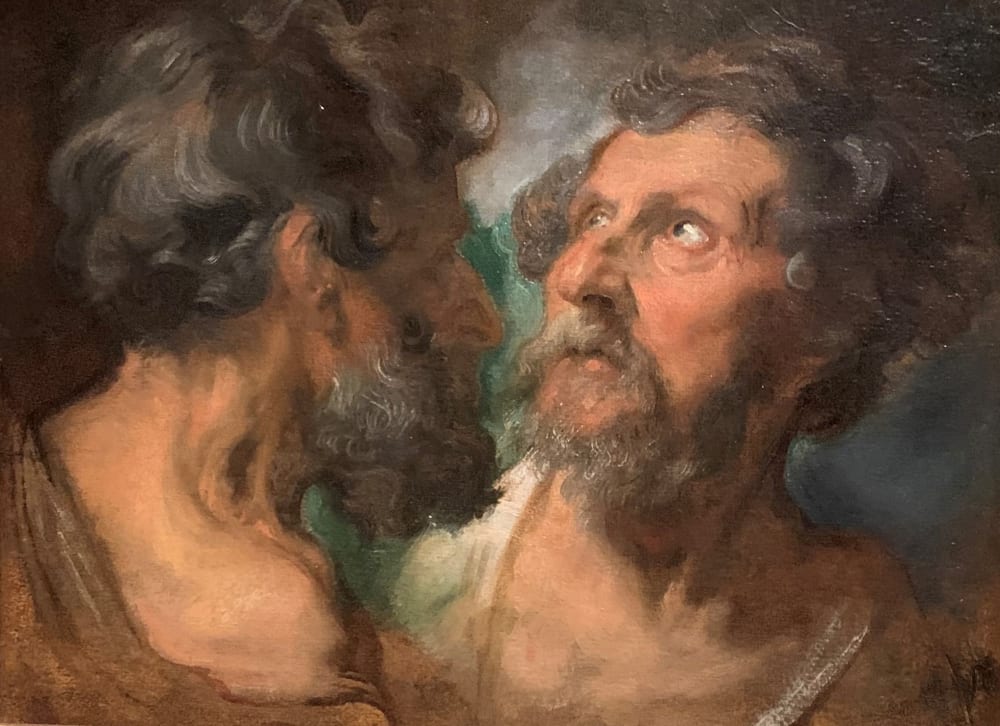
With only a few days to go before the exhibition closed, I jumped on a plane to Munich and visited the blockbuster show Van Dyck at the Alte Pinakothek.
The show presented the results of an extensive research project focussing on the works by Van Dyck in the Bavarian State Paintings Collections. By displaying these works alongside original preparatory studies and other versions of the same compositions, the exhibition aimed to shed more light on the genesis of Van Dyck's work and his studio practices. It included around one hundred works and was curated by Dr Mirjam Neumeister, curator of Flemish paintings at the Alte Pinakothek.
The exhibition was more ambitious than I was expecting, although for me the most interesting section was the first room which focussed on Van Dyck's early years in Antwerp. This will be the focus of this short note.
In around 1609/10 Van Dyck took up an apprenticeship with Hendrick van Balen, who specialised in painting small-scale 'cabinet' pictures, normally painted on copper. Balen, however, appears to have had little influence on the young Van Dyck, and instead his attention turned towards Peter Paul Rubens, an Antwerp superstar and one of the most respected artists of his day. Rubens' large, dramatic paintings depicting allegorical and biblical scenes had a profound impact on the young artist and from around 1616/17, Van Dyck devoted his energy to large multi-figured compositions. In the years that followed, he experimented with his technique and compositional ideas and began to establish his own artistic style.
In this first room visitors were introduced to several early large-scale works including Drunken Silenus (c.1617/18) (fig.1) which was compared to Rubens' painting of the same subject hanging nearby, and two versions of Christ Healing the Paralytic (c.1618-20) (fig.2). Several compositional studies on paper for the latter work were also on display (fig.3) along with a head-study in oils relating to the background figure to the right of Christ (fig.4). Although I am very familiar with Van Dyck's work, having researched and catalogued many examples here at the gallery, it was a great privilege to be able to compare finished compositions with the preparatory studies 'in the flesh'.
Like Rubens, Van Dyck painted oil studies of men, women and children in varying positions and showing different expressions of character, which were then kept and used for reference when painting larger compositions. The right-hand head in Two Studies of Heads (fig.5) (c.1618-20), for example, was used by Van Dyck for the head of Saint Phillip in the below work painted for his series of apostles (fig.6).
During these formative years, Van Dyck's style of painting was constantly developing, and this was very evident in the head-studies on display in the first room. Compare, for example, the coarsely painted Study of a Man Looking Down (fig.7) from c.1616-17 with the smoother, more animated Double Head Study of a Bearded Man (fig.8) thought to have been painted a few years later in c.1618-20. The latter work is more confidently painted and demonstrates a more sophisticated understanding of subtle flesh tones.
Double Head Study of a Bearded Man is also a rare survival insofar as it shows multiple heads on a single support (in this instance canvas, but Van Dyck generally used paper for these studies). Although we are now used to seeing the head-studies at standalone works, originally, many of them would have been painted side-by-side on a single piece of paper or canvas. After Van Dyck's death, however, the studies were often divided up by dealers and sold off individually.
Due to their spontaneity and originality, these studies were highly prized within Van Dyck's lifetime and patrons often tried to wrestle them from his grasp. One of the few recorded instances when Van Dyck did allow a preparatory sketch to be sold - in this case with the finished composition - was in May 1631 when he allowed Canon Roger Braye to keep the preparatory sketch he made for The Raising of the Cross which Braye had recently commissioned on behalf of Onze-Lieve-Vrouwekerk (The Church of Our Lady) in Kortrijk. This gesture was perhaps unavoidable, however, as just one-week earlier Braye had cunningly sent Van Dyck an unexpected gift of a dozen waffles.
As some of the purest distillations of Van Dyck's artistic ability, the head-studies on display in the first room alone justified the trip to Munich. To be able to compare the studies side-by-side with the finished compositions was a rare opportunity, and to see how Van Dyck was able to adapt a characterful head of an Antwerp model into a saint or innocent bystander with only a few alterations was a pertinent reminder of just how great an artist Van Dyck was and how crucial exhibitions like this are to developing our understanding of his work.


